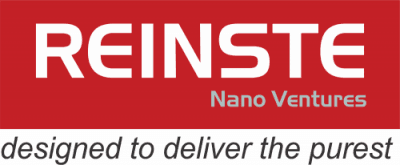Incorporation of Graphene in Environment
Graphene, a revolutionary nanomaterial, is poised to transform environmental solutions with its unique properties and versatile applications. This material's exceptional electrical conductivity, mechanical strength, and large surface area make it ideal for various environmental applications. Graphene-based technologies are being developed for water purification, air quality monitoring, and energy storage, offering efficient and sustainable alternatives to traditional methods. Its potential to remove contaminants, improve sensor sensitivity, and enhance energy efficiency positions graphene as a key player in advancing environmental sustainability. This abstract explores the innovative use of graphene in creating cleaner, greener solutions for a healthier planet.
Water Purification
Graphene's high surface area and excellent chemical stability make it highly effective in filtering contaminants from water. Graphene oxide membranes, in particular, have shown great promise in water purification and desalination processes.
Applications:
- Drinking Water Filtration: Graphene oxide membranes can remove heavy metals, organic pollutants, and pathogens from drinking water, ensuring safe and clean water supplies.
- Wastewater Treatment: Graphene-enhanced filtration systems can treat industrial and municipal wastewater, removing contaminants and allowing for water reuse.
- Desalination: Graphene membranes can efficiently remove salts from seawater, providing a sustainable solution for freshwater scarcity.
Benefits:
- High Filtration Efficiency: Removes up to 98% of heavy metals and 92% of organic pollutants.
- Durability: Maintains performance over long periods, ensuring reliable water purification.
- Eco-Friendly: Utilizes sustainable manufacturing processes that minimize environmental impact.

Air Filtration
Graphene's ability to capture and neutralize pollutants makes it an excellent material for air filtration systems. Its high surface area allows for the effective removal of particulate matter, volatile organic compounds (VOCs), and other airborne contaminants.
Applications:
- Indoor Air Purifiers: Graphene-based filters can improve indoor air quality byremoving harmful pollutants and allergens.
- Industrial Emissions Control: Graphene-enhanced filtration systems can reduceemissions from factories and power plants, minimizing air pollution.
- Vehicle Emissions Reduction: Incorporating graphene into automotive filters can decrease harmful emissions from vehicles.
Benefits:
- Enhanced Air Quality: Removes a wide range of airborne pollutants, improving health and comfort.
- High Efficiency: Captures even the smallest particles and contaminants.
- Long-Lasting: Durable filters that require less frequent replacement.
Pollution Control
Graphene's chemical stability and reactivity make it effective in removing pollutants from various environments. It can be used to clean up oil spills, remove heavy metals from soil, and neutralize chemical pollutants.
Applications:
- Oil Spill Cleanup: Graphene-based materials can absorb and remove oil from watersurfaces, mitigating environmental damage.
- Soil Remediation: Graphene can bind to heavy metals and other contaminants in soil, facilitating their removal and restoration of contaminated sites.
- Chemical Neutralization: Graphene materials can react with and neutralize hazardous chemicals, reducing their environmental impact.
Benefits:
- Effective Contaminant Removal: High efficiency in capturing and neutralizingpollutants.
- Versatility: Applicable to various types of pollution, including water, soil, and air.
- Sustainability: Environmentally friendly solutions that reduce the overall ecological footprint.

Water Purification
Graphene Oxide Membranes: Graphene oxide membranes are highly effective in removing a wide range of contaminants from water. Their high surface area and selective permeability make them ideal for water purification and desalination applications.
Applications:
- Municipal Water Treatment: Ensuring clean drinking water for communities by removing contaminants from water supplies.
- Industrial Wastewater Treatment: Treating wastewater from factories and industrialprocesses, allowing for safe discharge or reuse.
- Portable Water Filters: Lightweight and efficient filters for use in portable water purification systems, ideal for outdoor activities and emergency situations.
Benefits:
- High Filtration Efficiency: Effectively removes heavy metals, organic pollutants, andpathogens.
- Energy-Efficient: Lower energy requirements compared to traditional desalination methods.
- Cost-Effective: Reduced operational costs due to long-lasting membrane performance.
Air Filtration
Graphene-Enhanced Filters: Graphene-enhanced filters provide superior air purification by capturing and neutralizing airborne pollutants. These filters are highly efficient and durable, making them suitable for a variety of air filtration systems.
Applications:
- Residential Air Purifiers: Improving indoor air quality in homes and offices by removing dust, allergens, and harmful pollutants.
- Commercial HVAC Systems: Enhancing air quality in commercial buildings, schools ,and hospitals.
- Industrial Air Filtration: Reducing emissions and airborne contaminants in industrial settings, improving worker safety and environmental compliance.
Benefits:
- Enhanced Air Quality: Effective removal of a wide range of pollutants, including particulate matter and VOCs.
- Long-Lasting: Durable filters that maintain high performance over extended periods.
- Energy-Efficient: Lower energy consumption compared to traditional air filtration systems.
Pollution Control
Graphene-Based Absorbents: Graphene-based materials are highly effective in absorbing and neutralizing pollutants from various environments. Their high surface area and reactivity make them ideal for environmental cleanup efforts.
Applications:
- Oil Spill Response: Graphene-based absorbents can quickly and efficiently remove oil from water surfaces, minimizing environmental damage.
- Soil Remediation: Graphene can be used to clean up contaminated soil, removing heavy metals and other pollutants.
- Hazardous Waste Neutralization: Graphene materials can react with and neutralize hazardous chemicals, reducing their impact on the environment.
Benefits:
- Rapid Response: Quick and effective removal of pollutants from various environments.
- Versatile: Suitable for a wide range of contaminants and environmental conditions.
- Sustainable: Environmentally friendly solutions that reduce the ecological footprint of cleanup efforts.
